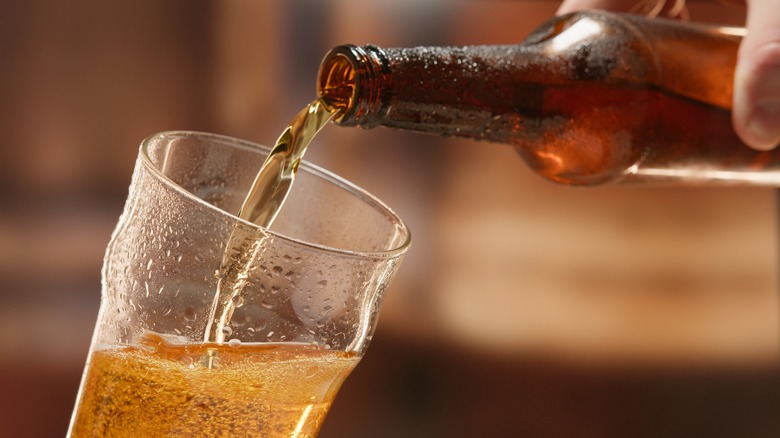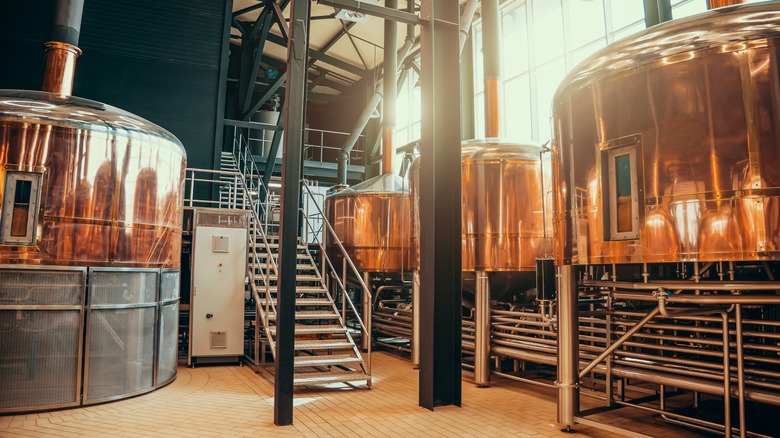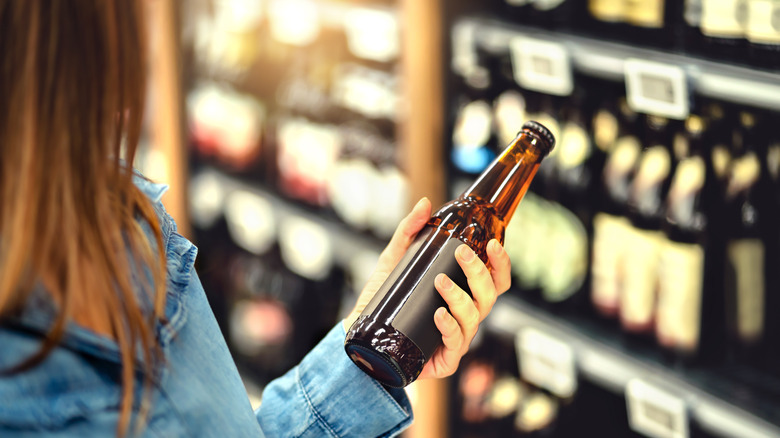What Is Malt Liquor And Is It Related To Beer?
With a vague name like malt liquor, this drink could be misconstrued as a type of beer, seltzer or even a fancy spirit. After all, malt is a general term for any drink made from water and malt (e.g. fermented grain) and everything from beer to lager is considered a malt beverage. Even root beer is considered a malt-flavored drink.
Malt liquor falls clearly within the beer family because both drinks are brewed the same way using malted barley, water, hops, and yeast. Beyond that, there are key differences in the ratio of ingredients, level of alcohol, and taste profile.
First, the facts: Malt liquor originated in England, but today is very much considered an American drink — you may recognize the brands like Colt 45 and Olde English 800. Malt liquor has more alcohol content, i.e. 7% to 12% alcohol by volume (ABV), compared to traditional beers, which has about 5% ABV. To achieve this higher alcohol content, brewers need to increase the amount of fermented sugar in the wort, which means using adjunct ingredients like corn or rice.
Malt liquor has been trying to shake off its cheap reputation for decades
And now onto the more subjective facts. Malt liquor has a reputation of being a bottom shelf drink because it is cheaper and more potent than beer. There's also a perception of excess drinking with malt liquor since it comes in large bottles or cans at 40 oz, compared to beer which range from 12 oz to 24 oz. This — and the higher ABV — explains why historically it is associated with people who are looking to get drunk quickly and easily.
Over the decades, liquor companies have tried to distance itself from beer or link itself to beer depending on who they are courting. In the 1960s, the ad for Schlitz Malt Liquor stated it is "bolder than beer." In the 1980s, actor Billy Dee Williams (yes, that's Lando from the Star Wars trilogy) became the face of malt liquor when he starred in ads for Colt 45 malt liquor; his "it works every time" campaign made no mention of beer. In the 1990s, the brains behind St. Ides malt liquor got rappers like Ice Cube and Wu-Tang Clan to endorse the drink in a series of commercials, which cemented its reputation as a "hip-hop drink" — again with no mention of what kind of drink it is.
The rise of craft malt liquor
Today, malt liquor is linked to beer but still has its own identity and taste profile. Malt liquor tends to be sweet and is balanced by the slight bitterness from the hops. Jim Weatherwax, the plant manager for Oskar Blues, described malt liquor as "really, really high alcohol pilsner" in an interview with Outside. In comparison, beer has a balance of sweet, sour, bitter, or creamy taste.
This is still a broad generalization as no two malt liquors are the same and no two beers are the same. Beer has already undergone a "craft" or "microbrewery" phase, where brewers and customers emphasize the unique qualities of a particular batch. Similarly, malt liquor is also going through this process. Some breweries are taking steps to brew malt liquors using the same care, diligence, and high-quality ingredients as traditional beers. In other words, we are now in the craft malt liquor era.
These craft malt liquors have complex flavors and are notably different from its mass produced predecessors. As Lee Lord, the head brewer at Narragansett told the New York Times, these beers appeal to people who may not like aggressively hopped or bitter I.P.A.s.
All the sweet tooth drinkers, take note.


